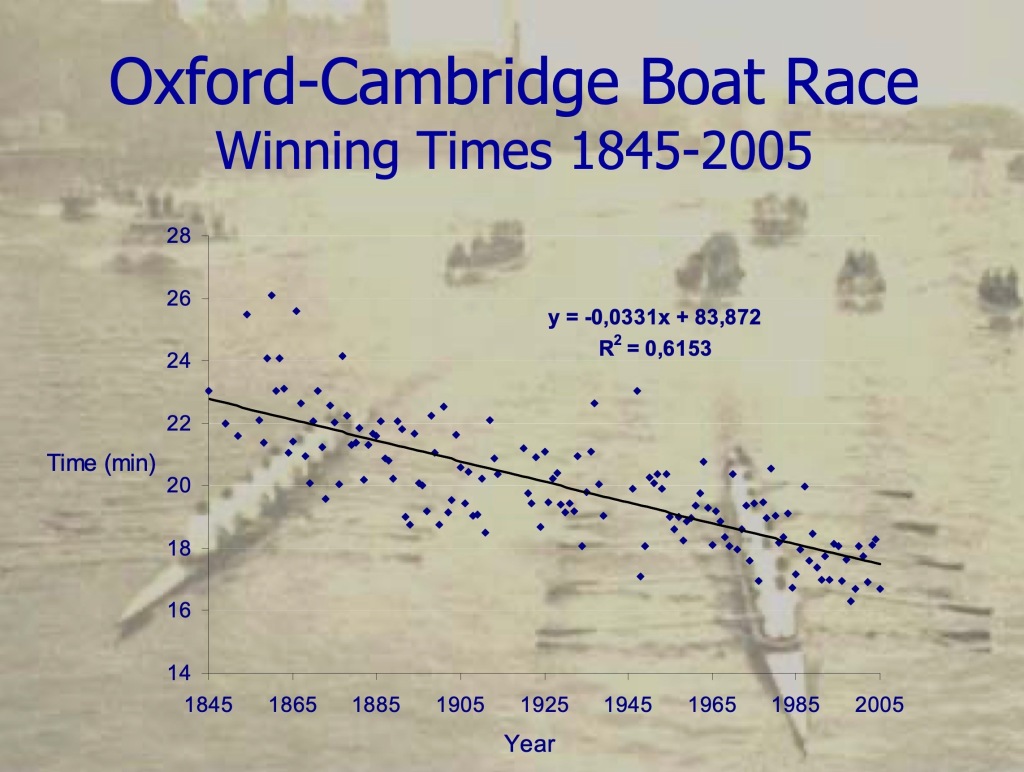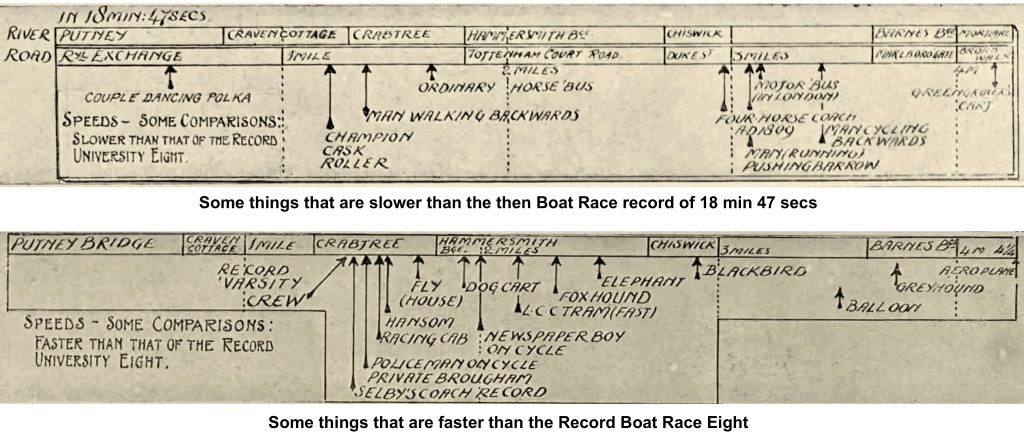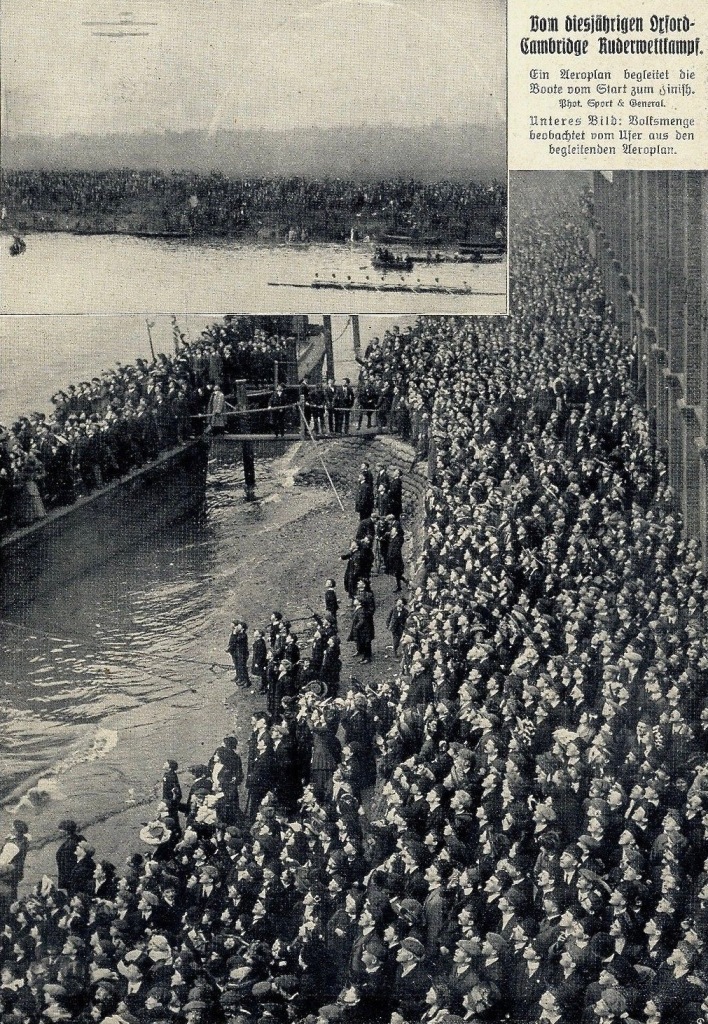
27 March 2024
By Tim Koch
Tim Koch is on speed.
Boat Race Day 2024 is less than a week away and it seems unlikely that any record times will be set. The race is on the flood (incoming) tide, but the crews will be fighting against the large volume of rainwater still coming down the Thames from its source. Since before Christmas, the Port of London Authority has had the tidal Thames on “Yellow Flag” status for most of the time meaning that weaker crews should not go afloat on an ebb (outgoing) tide.
Race times taken on a tidal river are clearly semi-meaningless. Few would claim that the current men’s record holders, the 1998 Cambridge men’s crew, were in reality the fastest Blue Boat ever. The speed of the flood tide will obviously vary – as will the effects of head, tail and cross winds. Further there may or may not be various volumes of rainwater flowing against the flood. Despite this, Boat Race times are still of great interest and the trend is undoubtedly towards faster races. There is little mystery why this is. As Stephen Seiler and others have pointed out, people are bigger and massive improvements have been made in training and technology.


A look at times and technology since the first Putney to Mortlake University Boat Race in 1845 shows a clear trend.












Before the 1911 Boat Race, one of the popular magazines of the day decided to illustrate how fast – or how slow – a Blue Boat was using the then record time of 18 minutes 47 seconds compared to an eclectic variety of moving animals and people.


The top graphic looks at some things slower than a record breaking university eight. When the boat reached the finish at Mortlake, a couple dancing the Polka would not have got to Craven Cottage football ground; a man walking backwards would be at the Crabtree pub; an “ordinary horse bus” would not have reached Hammersmith Bridge; it seems unlikely but a man cycling backwards would have done over three miles and would be approaching Barnes Bridge; finally, it appears that a greengrocer’s cart is almost as fast as an Oxford or Cambridge eight.
The lower graphic shows things faster than a Blue Boat. When a highly trained crew of student athletes has got to the Crabtree (800 hundred metres downstream of Hammersmith Bridge), ahead of them will be a record breaking coachman, a Brougham carriage, a policeman on a bicycle and a fly (house). Already at Hammersmith Bridge will be a dog cart (which is actually pulled by a horse), a newspaper boy on a bicycle (who is clearly faster than a cycling policeman), a tram (fast), a foxhound and an elephant. However, by this time a blackbird will already be over Chiswick and a greyhound will be under Barnes Bridge. A newfangled aeroplane beats them all.

I think that if these alleged speeds were put on Wikipedia today, the caution “citation needed” would be added.
The 78th Women’s Boat Race begins at 14:46 on Saturday, 30th March 2024, with the 169th Men’s Boat Race an hour later.
